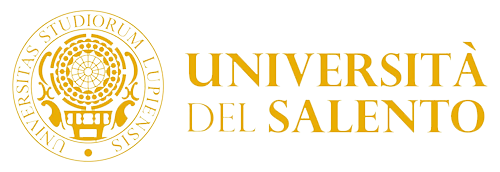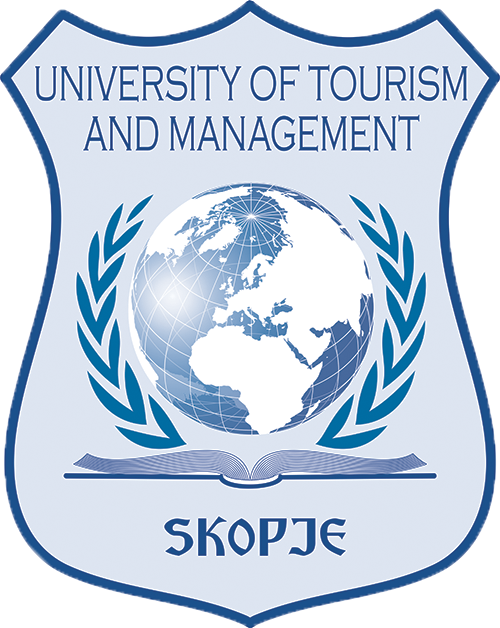Contents in bullet points
1. Module name : Cultural European Heritage Legislation
Unit 1: Cultural heritage
The European Commission supports Member States and stakeholders to safeguard Europe’s cultural heritage.
Europe’s cultural heritage is a rich and diverse mosaic of cultural and creative expressions, an inheritance from previous generations of Europeans and a legacy for those to come.
Europe’s cultural heritage includes natural, built and archaeological sites, museums, monuments, artworks, historic cities, literary, musical and audiovisual works, and the knowledge, practices and traditions of European citizens.
Cultural heritage enriches the individual lives of citizens. Is a driving force for the cultural and creative sectors, and plays a role in creating and enhancing Europe's social capital.
It is also an important resource for economic growth, employment and social cohesion, offering the potential to revitalise urban and rural areas and promote sustainable tourism.
EU Member States pursue policy collaboration on cultural heritage through the Council of Ministers for Education, Youth, Culture & Sport, and through the Open Method of Coordination.
Running since 2019, the Commission expert group on cultural heritage advises on how to implement EU policies for cultural heritage. It involves Member States, associated countries, European cultural heritage networks, civil society organisations and international organisations, as well as EU institutions.
Unit 2: The role and actions of the EU
While policy in this area is primarily the responsibility of Member States, regional and local authorities, the EU is committed to safeguarding and enhancing Europe's cultural heritage through a number of policies and programmes.
Europe’s cultural heritage is supported by a range of EU policies, programmes and funding, notably the Creative Europe programme.
EU policies in other areas that take increasing account of heritage span from research, innovation, education, environment, climate change and regional policies to digital policies. Consequently, funding for cultural heritage is available under Horizon 2020, Erasmus+, Europe for Citizens and European Structural and Investment Funds.
Section 2.1: European Framework for Action on Cultural Heritage
One of the most important features at EU level is the European Framework for Action on Cultural Heritage (2018), which reflects the common set-up for heritage-related activities at European level.
It builds on the efforts of the European Year of Cultural Heritage 2018, to capture and scale-up its success to ensure a lasting impact.
Unit 3: New European Agenda for Culture
Following the 2007 European Agenda for Culture, the Commission adopted the New European Agenda for Culture in 2018 to take into account the evolution of the cultural sector.
The New Agenda and its accompanying Staff Working Document provide the framework for cooperation on culture at the EU level. These focus on the positive contribution that culture brings to Europe’s society, its economy and international relations.
The Agenda also sets out enhanced working methods with Member States, civil society organisations and international partners.
Member States define the main topics and working methods for policy collaboration on culture through Work Plans for Culture. These documents are adopted by the Council of the European Union.
Unit 4: UNESCO
The United Nations Educational, Scientific and Cultural Organization (UNESCO) seeks to encourage the identification, protection and preservation of cultural and natural heritage around the world considered to be of outstanding value to humanity. This is embodied in an international treaty called the Convention concerning the Protection of the World Cultural and Natural Heritage, adopted by UNESCO in 1972.
Section 4.1: The World Heritage Convention
The Convention sets out the duties of States Parties in identifying potential sites and their role in protecting and preserving them. By signing the Convention, each country pledges to conserve not only the World Heritage sites situated on its territory, but also to protect its national heritage.
The States Parties are encouraged to integrate the protection of the cultural and natural heritage into regional planning programmes, set up staff and services at their sites, undertake scientific and technical conservation research and adopt measures which give this heritage a function in the day-to-day life of the community.
Section 4.1.1: The World Heritage Convention: World Heritage Fund
It explains how the World Heritage Fund is to be used and managed and under what conditions international financial assistance may be provided.
The Fund for the Protection of the World Cultural and Natural Heritage of Outstanding Universal Value, called "the World Heritage Fund", was established under Article 15 of the World Heritage Convention and may be used only for such purposes as the World Heritage Committee shall define.
Unit 4.2: World Heritage Journeys showcases UNESCO
Supported by the European Union, World Heritage Journeys showcases UNESCO recognised outstanding cultural heritage in a travel platform that promotes sustainable tourism development across Europe.
The World Heritage Journeys of the European Union is a project implemented in partnership with National Geographic, and brings together 34 World Heritage sites through four different thematic itineraries; Royal Europe, Ancient Europe, Underground Europe and Romantic Europe.
Each journey is intended to help travellers develop a greater understanding of Outstanding Universal Value and cultural heritage at large. Cultural heritage is the primary focus for this initiative, combining both built heritage, with historic and existing intangible cultural heritage expressed through the community’s living cultural values.
The most significant feature of the 1972 World Heritage Convention is that it links together in a single document the concepts of nature conservation and the preservation of cultural properties.
The Convention recognises the way in which people interact with nature, and the fundamental need to preserve the balance between the two.
In Conclusion
The European Union and other international organizations are interested in the issue of cultural heritage. Cultural heritage is both a form of local identity and a means by which to develop its economy, and Europe knows this well.











Title
Cultural European Heritage Legislation
Keywords
EU programmes; Legislation; Cultural Heritage; Entrepreneurship
Author
IHF
Languages
English
Description
1. Module name : Cultural European Heritage Legislation
Unit 1: Cultural heritage
The European Commission supports Member States and stakeholders to safeguard Europe’s cultural heritage.
Europe’s cultural heritage is a rich and diverse mosaic of cultural and creative expressions, an inheritance from previous generations of Europeans and a legacy for those to come.
Europe’s cultural heritage includes natural, built and archaeological sites, museums, monuments, artworks, historic cities, literary, musical and audiovisual works, and the knowledge, practices and traditions of European citizens.
Cultural heritage enriches the individual lives of citizens. Is a driving force for the cultural and creative sectors, and plays a role in creating and enhancing Europe's social capital.
It is also an important resource for economic growth, employment and social cohesion, offering the potential to revitalise urban and rural areas and promote sustainable tourism.
EU Member States pursue policy collaboration on cultural heritage through the Council of Ministers for Education, Youth, Culture & Sport, and through the Open Method of Coordination.
Running since 2019, the Commission expert group on cultural heritage advises on how to implement EU policies for cultural heritage. It involves Member States, associated countries, European cultural heritage networks, civil society organisations and international organisations, as well as EU institutions.
Unit 2: The role and actions of the EU
While policy in this area is primarily the responsibility of Member States, regional and local authorities, the EU is committed to safeguarding and enhancing Europe's cultural heritage through a number of policies and programmes.
Europe’s cultural heritage is supported by a range of EU policies, programmes and funding, notably the Creative Europe programme.
EU policies in other areas that take increasing account of heritage span from research, innovation, education, environment, climate change and regional policies to digital policies. Consequently, funding for cultural heritage is available under Horizon 2020, Erasmus+, Europe for Citizens and European Structural and Investment Funds.
Section 2.1: European Framework for Action on Cultural Heritage
One of the most important features at EU level is the European Framework for Action on Cultural Heritage (2018), which reflects the common set-up for heritage-related activities at European level.
It builds on the efforts of the European Year of Cultural Heritage 2018, to capture and scale-up its success to ensure a lasting impact.
Unit 3: New European Agenda for Culture
Following the 2007 European Agenda for Culture, the Commission adopted the New European Agenda for Culture in 2018 to take into account the evolution of the cultural sector.
The New Agenda and its accompanying Staff Working Document provide the framework for cooperation on culture at the EU level. These focus on the positive contribution that culture brings to Europe’s society, its economy and international relations.
The Agenda also sets out enhanced working methods with Member States, civil society organisations and international partners.
Member States define the main topics and working methods for policy collaboration on culture through Work Plans for Culture. These documents are adopted by the Council of the European Union.
Unit 4: UNESCO
The United Nations Educational, Scientific and Cultural Organization (UNESCO) seeks to encourage the identification, protection and preservation of cultural and natural heritage around the world considered to be of outstanding value to humanity. This is embodied in an international treaty called the Convention concerning the Protection of the World Cultural and Natural Heritage, adopted by UNESCO in 1972.
Section 4.1: The World Heritage Convention
The Convention sets out the duties of States Parties in identifying potential sites and their role in protecting and preserving them. By signing the Convention, each country pledges to conserve not only the World Heritage sites situated on its territory, but also to protect its national heritage.
The States Parties are encouraged to integrate the protection of the cultural and natural heritage into regional planning programmes, set up staff and services at their sites, undertake scientific and technical conservation research and adopt measures which give this heritage a function in the day-to-day life of the community.
Section 4.1.1: The World Heritage Convention: World Heritage Fund
It explains how the World Heritage Fund is to be used and managed and under what conditions international financial assistance may be provided.
The Fund for the Protection of the World Cultural and Natural Heritage of Outstanding Universal Value, called "the World Heritage Fund", was established under Article 15 of the World Heritage Convention and may be used only for such purposes as the World Heritage Committee shall define.
Unit 4.2: World Heritage Journeys showcases UNESCO
Supported by the European Union, World Heritage Journeys showcases UNESCO recognised outstanding cultural heritage in a travel platform that promotes sustainable tourism development across Europe.
The World Heritage Journeys of the European Union is a project implemented in partnership with National Geographic, and brings together 34 World Heritage sites through four different thematic itineraries; Royal Europe, Ancient Europe, Underground Europe and Romantic Europe.
Each journey is intended to help travellers develop a greater understanding of Outstanding Universal Value and cultural heritage at large. Cultural heritage is the primary focus for this initiative, combining both built heritage, with historic and existing intangible cultural heritage expressed through the community’s living cultural values.
The most significant feature of the 1972 World Heritage Convention is that it links together in a single document the concepts of nature conservation and the preservation of cultural properties.
The Convention recognises the way in which people interact with nature, and the fundamental need to preserve the balance between the two.
In Conclusion
The European Union and other international organizations are interested in the issue of cultural heritage. Cultural heritage is both a form of local identity and a means by which to develop its economy, and Europe knows this well.
Contents
Cultural European Heritage Legislation
Objectives and goals
Introduction
Cultural European Heritage Legislation
The role and actions of the EU
Europe’s cultural heritage is supported by a range of EU policies, programmes and funding, notably the Creative Europe programme.
EU policies in other areas that take increasing account of heritage span from research, innovation, education, environment, climate change and regional policies to digital policies. Consequently, funding for cultural heritage is available under Horizon 2020, Erasmus+, Europe for Citizens and European Structural and Investment Funds.
European Framework for Action on Cultural Heritage
New European Agenda for Culture
UNESCO
The World Heritage Convention
The World Heritage Convention: World Heritage Fund
World Heritage Journeys showcases UNESCO
In Conclusion